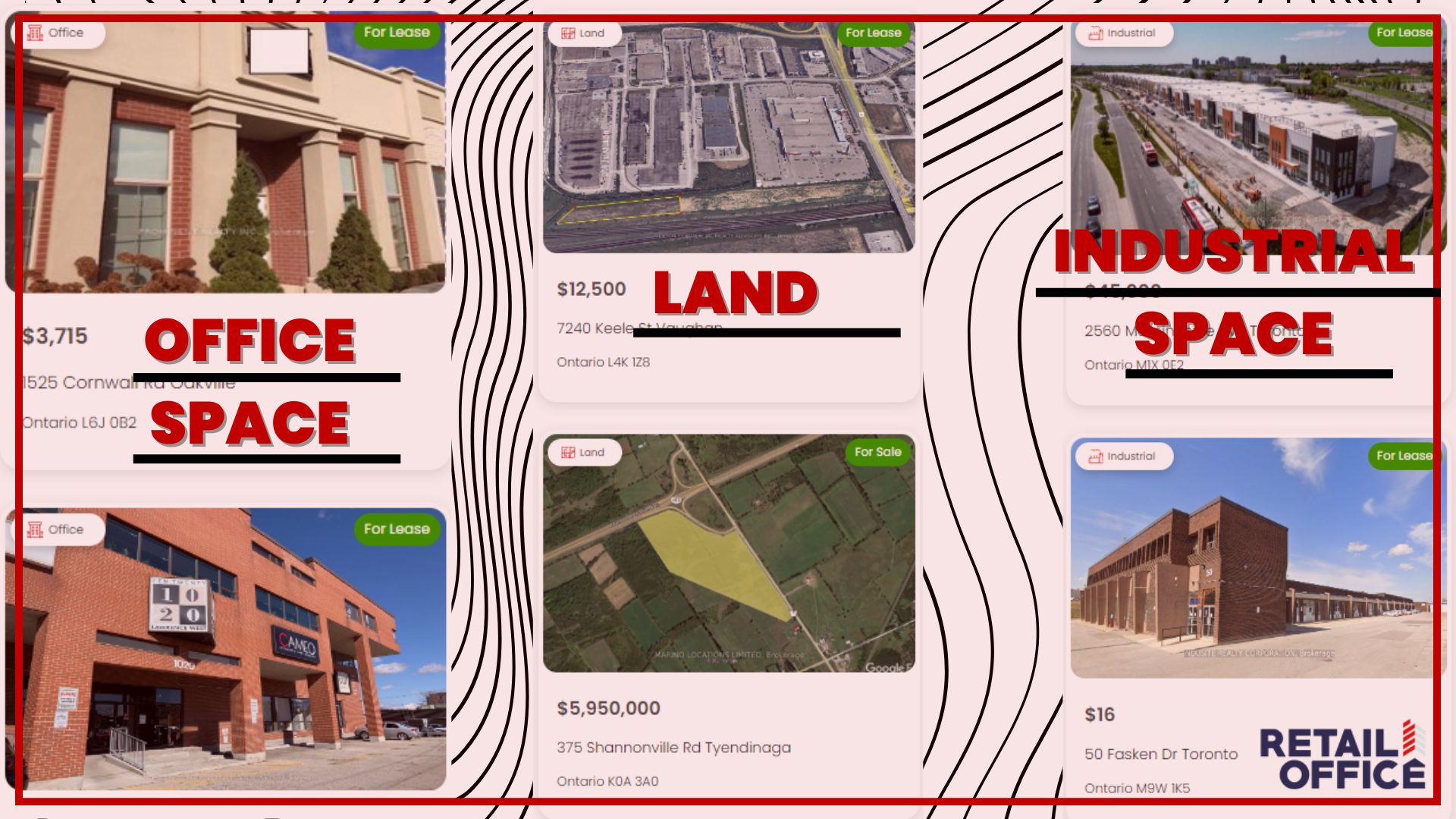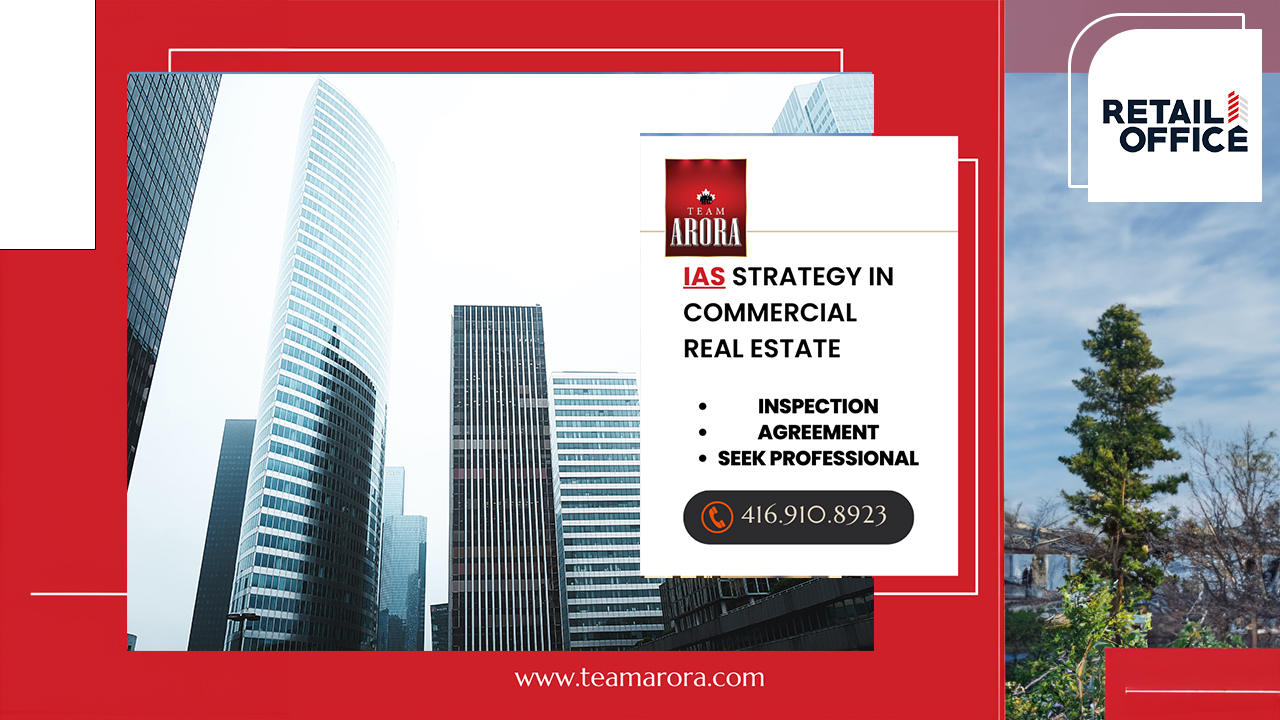Table of Contents
-
Introduction: Why Ontario?
-
Understanding Land Development as an Investment
-
Key Regions in Ontario with High Growth Potential
-
Types of Land Investment Opportunities
-
The Development Process: From Dirt to Dollars
-
Regulatory Landscape and Zoning Essentials
-
Risk Management and ROI Forecasting
-
Case Studies: Land That Paid Off Big
-
RetailnOffice Advantage: Why Partner with Us
-
Take the Next Step – Explore Our Listings
1. Introduction: Why Ontario?
Ontario is not just Canada’s most populous province — it’s also a thriving hub of real estate opportunity. With growing cities, expanding infrastructure, and an immigration-fueled housing demand, the land market is heating up. For real estate investors, this isn’t just a trend — it’s a strategic opportunity to enter early and develop assets that appreciate dramatically over time.
Land is the ultimate blank slate. And in Ontario, the canvas is vast and full of potential.
2. Understanding Land Development as an Investment
Land development involves transforming raw or underused land into income-generating real estate, such as residential communities, retail centers, industrial parks, or mixed-use complexes. While traditional property investing focuses on existing structures, land development goes deeper — you’re literally creating value from the ground up.
Why it’s lucrative:
-
High ROI potential when development is timed with regional growth
-
Tax advantages through land banking or capital cost allowance
-
Portfolio diversification that balances existing asset risks
But land isn’t just about profit. For visionaries, it’s about building the future.
3. Key Regions in Ontario with High Growth Potential
Strategic location is everything in land development. Ontario has several hot zones that promise exceptional growth, especially with ongoing infrastructure upgrades and shifting demographics.
🔹 Greater Toronto Area (GTA)
-
Population explosion and transit expansion (Metrolinx)
-
Greenfield development on the outskirts (e.g., Milton, Caledon)
-
High demand for commercial and retail real estate
🔹 Golden Horseshoe
-
Access to major highways and trade routes
-
Rapidly growing cities like Hamilton, St. Catharines, and Niagara Falls
-
Ideal for industrial/logistics development
🔹 Eastern Ontario
-
Ottawa tech boom driving suburban expansion
-
Cheaper land, higher margins
-
Great for residential subdivisions and retirement communities
🔹 Southwestern Ontario
-
Windsor-Essex benefits from U.S. border proximity
-
Agricultural land turning into subdivisions
-
Battery plant and EV sector bringing industrial land opportunities
These aren’t just places on a map — they’re ground zero for tomorrow’s developments.
4. Types of Land Investment Opportunities
Investors can choose from different land formats depending on their strategy, budget, and risk appetite.
🏗️ Raw Land
Unzoned, undeveloped, and often cheaper. High upside but also regulatory hurdles.
📈 Pre-Zoned Land
Already zoned for commercial, residential, or industrial use. Less risk, easier approvals.
🏘️ Subdivision Development Land
Ideal for residential developers. May include pre-approved plans or servicing.
🛍️ Retail and Office Land
Perfect for building plazas, strip malls, or hybrid office-retail spaces. Great for recurring lease income.
RetailnOffice can guide you through every type — from off-market farmland to shovel-ready parcels.
5. The Development Process: From Dirt to Dollars
Turning land into a developed site involves multiple phases. Understanding this lifecycle helps you estimate timelines, budgets, and profits.
-
Land Acquisition – Find undervalued or strategically located plots
-
Due Diligence – Survey, zoning, environmental tests
-
Rezoning & Permits – Work with municipalities for approvals
-
Servicing – Water, sewer, electricity
-
Site Planning – Architectural, engineering, site layout
-
Construction – Actual development phase
-
Leasing/Sales – Generate revenue from finished property
Each step requires expertise — and that’s where RetailnOffice excels.
6. Regulatory Landscape and Zoning Essentials
Navigating Ontario’s land use policies can be complex. Every region has its own bylaws, growth plans, and zoning requirements. A single missed detail can delay — or kill — your project.
Critical considerations:
-
Zoning categories (residential, mixed-use, employment, greenbelt)
-
Official Plans (long-term land use documents)
-
Development Charges (fees to municipalities)
-
Conservation Authority Regulations (especially near wetlands or floodplains)
RetailnOffice works hand-in-hand with planners and consultants to keep your investment on track and compliant.
7. Risk Management and ROI Forecasting
Like any investment, land development carries risks — but they’re manageable with the right approach.
🔍 Risk Factors:
-
Market slowdowns
-
Zoning or environmental issues
-
Delays in approvals
-
Construction cost inflation
📊 ROI Factors:
-
Land appreciation over holding period
-
Income from leasing/selling developed property
-
Municipal incentives or tax breaks
Smart investors use feasibility studies, pro forma models, and expert consultations — all of which RetailnOffice can provide.
8. Case Studies: Land That Paid Off Big
📍 Milton, ON – Retail Plaza Investment
In 2019, an investor purchased 2.5 acres zoned for commercial use. Within 3 years:
-
Property doubled in value
-
Developed into a strip plaza with 100% occupancy
-
Annual lease income exceeded $200,000
📍 Niagara Region – Land Banking Success
Investor acquired 10 acres of agricultural land near a proposed highway extension. In 5 years:
-
Rezoned to residential
-
Sold to a developer for 4x purchase price
📍 Brampton – Mixed-Use Office/Retail
RetailnOffice assisted in acquiring and developing a parcel near a high-growth corridor. Today:
-
Hosts a professional complex with co-working space and retail frontage
-
Generates recurring monthly income
-
Valuation has tripled since 2021
9. RetailnOffice Advantage: Why Partner with Us
At RetailnOffice, we don’t just list land — we uncover hidden potential. Here’s what sets us apart:
-
Off-Market Access: Get deals before they hit MLS
-
Expert Due Diligence: Environmental, zoning, and feasibility insights
-
Custom Development Strategy: Tailored to your goals
-
Network of Professionals: Architects, engineers, builders, and legal teams
-
Transparent Communication: No surprises, just solutions
We’re your full-circle development partner — from land scouting to turning the key in your new building.
10. Take the Next Step – Explore Our Listings
If you’ve been waiting for the right time to invest in Ontario’s land, this is it. Rising demand, scarce supply, and expanding municipalities are creating perfect conditions for high-value development.
🔗 Browse our current listings
📞 Contact our expert advisors today
💬 Let’s start a conversation about your next big win in real estate
Whether you’re looking for 1 acre or 100, RetailnOffice is your gateway to Ontario’s land development goldmine.



